#panavision
Video
He was nothing. The well is everything.
- Lawrence of Arabia (1964)
One of the greatest cinematic scenes in movie history. And no wonder. To film Omar Sharif's entrance through a mirage, Panavision created a 482mm lens specifically for this one shot as envisaged by David Lean, the director.
It has never been used since.
#lawrence of arabia#quote#film#cinema#movie#panavision#cinematography#lens#film lens#david lean#peter o'toole#omar sharif#culture
379 notes
·
View notes
Text


Nope - 2022 - Dir. Jordan Peele
#movie#hoodie#orange#nope#the mummy#the scorpion king#panavision#crew hoodie#jordan peele#graveyard goods#steven yeun#Daniel Kaluuya#oj haywood#Keke Palmer#emerald haywood#Steven Yeun#ricky jupe park#Brandon Perea#angel torres#Michael Wincott#antlers holst#Barbie Ferreira#Keith David#Sophia Coto#Donna Mills#Wrenn Schmidt#Oz Perkins#spectacle#Nope - 2022 - Dir. Jordan Peele
11 notes
·
View notes
Text

Jess Franco shooting Dark Mission (1988)
50 notes
·
View notes
Text
Thom Yorke’s Gear for The Smile’s NPR Tiny Desk Show

Thom at the piano during Panavision.
For The Smile’s Tiny Desk performance, Thom played his Fender Mustang bass on The Smoke and his vintage Guild Starfire II bass on Skirting On The Surface. Although we don’t get to hear the song, we can see that Thom played his 1964 Fender Jazzmaster when they performed We Don’t Know What Tomorrow Brings. The upright piano on Panavision belongs to Tiny Desk, as do the amps and microphones (we also explained this our last post). In an Instagram post, Bob Boilen mentioned that the band rehearsed for more than an hour before deciding which songs to play. This explains the range of guitars and basses that Thom brought along, only three of which would appear in the final video. Thom also brought a small pedalboard with a selection of his pedals for the show, and some of them went unused too — notably the Death By Audio Echo Dream 2, which he uses on You Will Never Work In Television Again.
Thom’s Instruments
Upright Piano
Fender EOB Stratocaster guitar
Fender Jazzmaster guitar in Olympic White (1964)
Martin 00-18 acoustic guitar (with Fishman Rare Earth pickup)
Fender Mustang bass in Olympic White
Guild Starfire II hollowbody bass in Cherry-Red (late-60s)
Thom’s Amplifiers (shared with Jonny):
Tiny Desk’s Fender ’68 Custom Deluxe Reverb combo amplifier
Tiny Desk’s Ampeg RB-110 combo amplifier
Thom’s Effects Pedals:
Guitar/Bass->
Boss TU-2 tuner
Death By Audio Echo Dream 2
Death By Audio Interstellar Overdriver
Earthquaker Devices Plumes overdrive
Telenordia TK-23 Kompressor
-> Amplifier
GigRig Generator and Distributor power supply

A photo of Thom’s mini bass and guitar pedalboard for the Tiny Desk show (joshrogosin). Looks like it’s just a plank with some velcro, almost certainly put together just for Tiny Desk.

Thom’s array of guitars (joshrogosin).
We can see Thom’s EOB Stratocaster with black covers on the Fernandes pickups. This was probably one of Fender’s original prototypes for Ed, before they sourced white pickup covers for the final version.
The Martin acoustic the newer one which Thom acquired around 2015, likely to save his older Martin from touring wear. It’s easiest to identify by the wear in the finish near the soundhole. Thom used his older Martin acoustic to performance Free In The Knowledge at the Royal Albert Hall in 2021. But for The Smile shows this year, he played this newer Martin, as can be seen in video from the Montreux Jazz Festival.

The headstock of Thom’s vintage Guild Starfire II bass (joshrogosin).
#Thom Yorke#The Smile#Skirting On The Surface#We Don't Know What Tomorrow Brings#The Smoke#Panavision#You Will Never Work In Television Again#NPR Tiny Desk#Tiny Desk#NPR
30 notes
·
View notes
Text



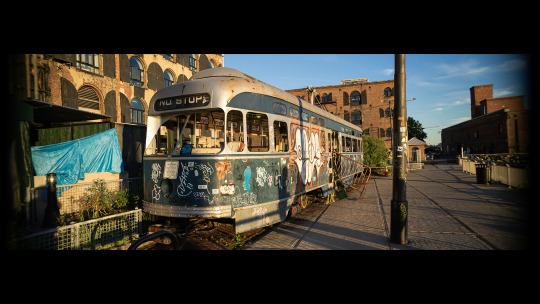






October 13, 2023 (3 of 3)
This was the last area of Red Hook I needed to check out. With this, I've now walked around the entire neighborhood.
#photography#street photography#widescreen#cinematic#cinematic photography#cityscape#landscape#industrial#golden hour#red hook#sunset park#brooklyn#new york#ny#panavision#ultra panavision 70
5 notes
·
View notes
Text
The #ShittyCameraChallenge: Out with the Sony PlayStation Portable and a 'Deakinizer', 10 June 2023
This afternoon the weather cleared up nicely after a dull start. So I grasped the opportunity to go out with the PlayStation Portable and the Panavision wide-angle converter that I took delivery of yesterday.
The idea for the wide-angle converter was to use it as a ‘Deakinizer’, a lens invented by cinematographer Roger Deakins that creates an image with a clear centre and blurred edges. I had…

View On WordPress
#blurry#Deakinizer#Dreamy#lens#LensFlip#LensMod#Panavision#PlayStation#PSP#ReverseLens#shittycamerachallenge#Sony#Wide-Angle
4 notes
·
View notes
Text

we are loss of Owen Roizman ASC, an extraordinary cinematographer whose career spanned decades and genres. He approached each project on its own terms, crafting unique looks that masterfully expressed each story. His remarkable body of work includes such landmark films as The French Connection (1971), The Exorcist (1973), The Taking of Pelham One Two Three (1974), Network (1976), and Tootsie (1982). Roizman leaves an indelible mark on the industry, and he will continue to inspire generations of filmmakers.
9 notes
·
View notes
Text
'One of the many reasons Christopher Nolan’s filmography is revered in the industry is due to his well-known affinity for IMAX and 70-millimeter film. His most recent feature dominating the box office this summer, Oppenheimer, pushed those limits, maxing out what IMAX film platters can do in the extraordinary biopic. To discuss the magic behind the lens, Collider’s Steve Weintraub had the opportunity to speak with another creative genius and a frequent Nolan collaborator, Director of Photography Hoyte van Hoytema.
In order to capture the gravity of the “father of the atomic bomb,” J. Robert Oppeneheimer’s story, played by Cillian Murphy, Nolan recruited trusted cinematographer Hoytema to work alongside him. While talking with Collider, Hoytema digs into his passion for filming, walking us through the details of all things IMAX, the format that can provide the spectacle a screenplay like this deserves. On top of the technical equipment, Hoytema also tells us everyone, from the visual effects department to lighting to the star-studded cast, including Robert Downey Jr., Florence Pugh and Emily Blunt, worked as a unit to achieve Nolan’s vision.
In this one-on-one, Hoytema also reveals the thing he geeks out over—besides filming—and shares surprising insight into one of today’s greatest filmmakers, having previously worked with Nolan on Interstellar, Dunkirk and Tenet. We find out why, unlike directors like Ridley Scott, Nolan’s productions generally employ the use of one camera, what Hoytema would change about IMAX cameras if he could, the equipment that didn’t exist prior to Oppenheimer, and tons more...
COLLIDER: Because I'm at Comic-Con, I just want to start with, is there anything that you geek out over? Maybe it's cameras, I'm not sure, but is there something that you geek out about
HOYTE VAN HOYTEMA: You mean in general in life?
Yeah, is there anything you collect? What do you geek out over?
HOYTEMA: I geek out over my machine shop. I have a CNC machine, a lot of metalworking things. We build a lot of stuff here in the garage.
I love it. So you have done such incredible work over your career, but there are going to be people who have never seen anything. If someone has never seen anything you've done, what's the first thing you'd like them watching and why?
HOYTEMA: I think, obviously, it's always the last film, you know? The last film you’ve done, it's always sort of an accumulation of things you dropped and things you added, and you're constantly growing, you're constantly evolving. You're constantly becoming wiser/more stupid, more interesting/more stuck up. But I think you always like to show the people who you are at the moment. So, I kind of feel the last film is always the nicest one to watch.
What would surprise Christopher Nolan fans to learn about making a movie with Christopher Nolan?
HOYTEMA: What surprised me, and what was something that I had to learn from working with Chris, is that he is an extremely intuitive person as well. He's, of course, known for his mind-bending intelligence, and his films; they always feel extremely well put together and extremely well planned. But what is very beautiful with Chris is that he is somebody that is not afraid of following his heart, and reacting to intuitive impulses, as well. He's a very sensitive and very much a feeling person. It's in that way, I also feel, that helps him very much in communicating with actors. A lot of actors, they are also people that work extremely much on an intuition level.
Ultimately with a film, you're also sort of translating a feeling to the audience, and in that way, that was something that surprised me back then because it doesn't surprise me today, anymore. But, as people call him sometimes, “Oh, he's very technical,” I would definitely debate it. He is one of the most sensitive and most intuitive directors I work with.
One of the things I'm fascinated by are the various processes that people make movies. For example, Ridley Scott will shoot with six cameras or seven cameras, and Roger Deakins will shoot with just one, and that's it. I'm curious, how often are you just using one camera on set, and how often do you like to do coverage?
HOYTEMA: For most of the time, we work with one camera on set. Effectively shooting with Chris is like a one-camera show. The camera is sort of the magic box that everything that happens around has to be directed and evolving towards, getting sucked into that one little box. So that one camera really becomes an epicenter on our shoes. As soon as you put two cameras on the set, that attention gets somehow divided, and being with Chris on the set is [an] extremely focused group of people that really work towards a very specific goal.
Chris is also somebody that loves to sit very close to the camera in order to understand what the camera is seeing, so he's always very close by looking into the set next to the camera. He's not a material collector or a cleaning lady or a vacuum cleaner, you know? It's a very meticulous and very focused process. The actors know exactly towards where they're working, the production designers, the prop people, the set dressers, but also, us, lighting, et cetera. It all has to evolve towards that one direction, and so the one camera should just feel very logical to us. It's sort of a very ultimate way of filmmaking for us. It feels very focused.
You shot with IMAX film, and you also shot with a 65-millimeter. Can you talk about the conversations you guys had as to when it would be an IMAX shot versus not an IMAX shot?
HOYTEMA: As I said before, as a lot of it is very much pulled out, we also work a little bit with our intuition there. That intuition is also very much led by the idea that we just wanna shoot as much as possible on as rich as possible negative. So, we love shooting as much as possible on IMAX. And also, in this film, the more intimate the situation got, the more sort of up close and personal things got, the more we want to get in there with an IMAX camera.
Now, of course, the IMAX camera has a few technical limitations that make it very hard and very challenging. It's a very loud camera, and it’s also bulky, and it's big. You cannot be a fly on the wall, for instance, with it, so in some situations, as much as you want to, they sort of require you to rethink it a little bit. Sometimes we had to record dialogue, so we would shoot on the five per 70-millimeter camera, but we very often would add an extra shot or an extra take on an IMAX camera to see if Chris could probably salvage the sound of it and put it in a film. So ultimately, I would say it's a very intuitive choice, but driven by sort of the will to squeeze as much as possible in there.
Listen, I am so thankful for what you and Chris do with IMAX. It's my favorite format. There's nothing like sitting in a theater with that huge IMAX screen. What do you actually love and hate about IMAX cameras? Like if you could fix something, the big camera, or is it just the sound, how loud it is?
HOYTEMA: If we would be able to fix the sound in an IMAX camera, it would be fantastic. Now, it’s almost to solve that sound problem is like defying physics. It's not just asking, “IMAX, can you make this thing more quiet?” What you have to imagine, and if you just hold on one second—I'll just grab something so I can show you—we got some real fun things here, some film strips. Let's start with this one, right? I'm just gonna show this. This is 35-millimeter, right? This is 35-millimeter anamorphic, that size. So a camera, in order to get these 24 shots per second in, the cam has to drag 24 of those frames per second through a camera, correct? So now we go five per, which is a camera that is 70-millimeter, that does the same as a 35-millimeter camera. And why are these cameras so bulky and heavy? This is five per old fashioned, the 65-millimeter camera. So per second, 24 of these big frames have to be pulled through a little hole. Well, it gets a little louder, it gets a little bulkier. But if you look at IMAX, this is how your negative is exposed, and this is how the film strip looks. So, instead of going like this through the camera, it goes like this through the camera. And here you see every frame is a huge piece of exposed film, so 24 of those frames, you have to pull through the camera per second.
So you can imagine how much power and inertia and how big [of] motors you need in order to do that, and how aggressive your mechanism has to be to every time stop that frame on the dime. That's the reason that that camera is so loud and it's so bulky and it's so heavy. It's just physically, it's very heavy, and it's very difficult. So, there you have the problem. I would love it to be as silent as a nothing, but it's very challenging to get it there. But that's definitely some improvement I would work on. And the more quieter that camera becomes, the more situations we can start applying that camera to. So ultimately, quieter would be my wish. I don't care so much about making it smaller, making it more comfortable. We're all the time sort of adapting the ergonomics of that camera. In the end, it's a little box. It's a mini fridge that you have to put in a special place, with grips that have the sensitivity of ballerinas. And [with] a little bit of smart external engineering, you can get the camera wherever you need it to be. But I think those sounds, that’s something that would be really wonderful to do something with.
This is gonna sound crazy, and I'm obviously just brainstorming in the moment, but is it possible to actually make the camera bigger for certain situations and almost blanket the camera with soundproofing? So instead of going smaller, you're going larger, and you're minimizing all the sound coming out of it, and you're using it in specific shots where you don't have camera movement, or it's on a device that can move separately?
HOYTEMA: That's not crazy at all. I mean, that's exactly what we have built, a certain device — blimps, they're called. So we have blimps for the IMAX cameras—a coffin, as we sometimes say—but it's literally the device that fits like a glove, or like a sort of coffin, that fits like a glove around the camera and is made out of different soundproofing materials. And yes, you get it quieter, but by those kinds of experimentations, we already found out that, exponentially, you have to get so big just because the sound in relation is so loud. Also, what you have to think about, a lot of the sounds that come out of the camera come through the lens, come through the front of the camera, and, at some point, you cannot just keep layering your optics. It's because that will, in the end, start to really affect some of your picture quality.
All I can say is you just demonstrated it with the examples of film, but when you capture an image on an IMAX frame like that, you're capturing so much more information. I don't think people realize when you film on IMAX, and then you bring it down to even 35-millimeter, the image is still so much better. There's so much more information there.
HOYTEMA: Oh yeah, absolutely. That trickle-down effect that people underestimate very often very much. But if you trickle down from an original that is pristine and that is great, you will feel that quality trickle down very, very much in the derived formats. Every time you print down, or you go down on the resolution, you lose a lot of detail, and you also gain a lot of artifacts. The better your original materials, the lesser artifacts you get. So, when I look at that, and at Apple or whatever, and I look at something that's originated in 70-mil or something that originated in 35-mil, I can very easily spot the difference.
I spoke to Chris, and he told me there are no CGI shots in the movie, which I found amazing. What was it like when you and him, and everybody involved, were talking about filming certain sequences, especially the use of light, and he wants to use these big IMAX cameras and do everything in camera? Can you sort of talk about making everything happen, with the visual effects team, obviously?
HOYTEMA: It’s, for me, always a super exciting period in the prep that is everybody sort of throwing those crazy ideas into the hats. And a lot of them, they don't have necessarily technical solutions to it, and then, step by step, people come up with all these kind of weird solutions and weird ideas that we then very often test them, and we start testing them as well as we start building them. Like it was very clear to us that, very early in the start, we wanted to—and I'm talking then about Andrew Jackson and Scott Fisher, our glorious visual and special effects team that were working very close together, also, because visual effects and special effects on a shoot like this is very closely related. Because Andrew Jackson, as much as how he's connected to a visual effects department, wanted to rely as little as possible on CGI. So he really took control over trying to get as much as possible in camera, as well in his world, and with the help of Scott Fisher. So they work very close together.
As much as we wanted this to be IMAX and part of the IMAX sequences, we realized that we want to shoot a lot of microphotography on IMAX format, [which] doesn't really have those kinds of possibilities, right? So straight away, we started engineering those specific lenses for the IMAX camera. Effectively, when you do this sort of microphotography, when you want to have a camera, for instance, in between here, or track in between here to enlarge the world of this to sort of a life-size format, you need special lenses. You need what we call probe lenses. They didn't exist for IMAX, so Dan Sasaki from Panavision built us this pro lens, and we experimented with it, and we improved it, and in the end, it was something that we used a lot for aquarium work and micro work and macro work. So, that was very exciting.
And basically, the visual effects department, you could say, was a tent that was always put up next to our set where we’re doing all these science experiments. We would shoot molded metal, shoot into aquariums with silver particles, or do micro explosions of balloons in reverse, et cetera, et cetera. There's a lot of small, little, very tactile physics experiments going on that we then tried to film in different ways, with different kinds of cameras, as well. And then sort of cobbled together this kind of idea of the quantum physics or particle physics, or atoms crashing into each other, or a gigantic nuclear explosion, et cetera, et cetera.'
#Christopher Nolan#Oppenheimer#Hoyte van Hoytema#IMAX#Cillian Murphy#Interstellar#Dunkirk#Tenet#Andrew Jackson#Scott Fisher#Dan Sasaki#Panavision
3 notes
·
View notes
Text
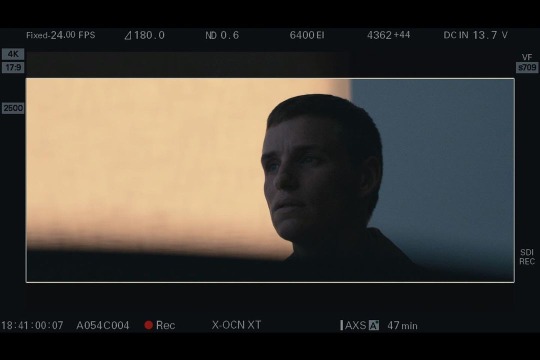
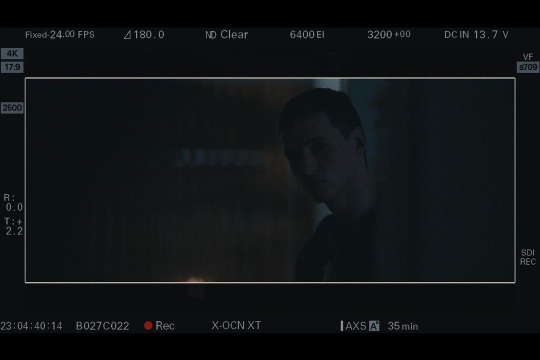




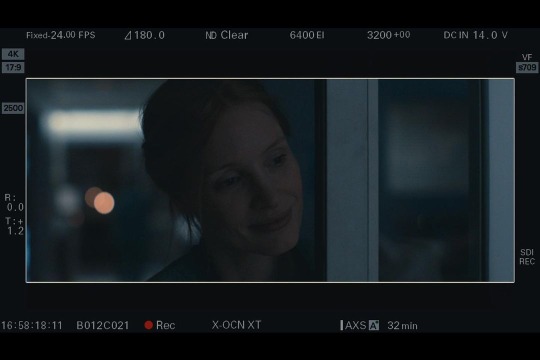
"The Good Nurse" -Behind The Scenes-
#Repost @panavisionofficial on IG :“We wanted a muddier black, we avoided the contemporary high-res file, and just did what we could to make the image less clean... Cinematographer Jody Lee Lipes, ASC (@jody_lee_lipes ) takes us #behindthescenes of #TheGoodNurse."
🎥 📸 Source: Director of Photography Jody Lee Lipes, via Panavision Official on Instagram.
11 notes
·
View notes
Photo
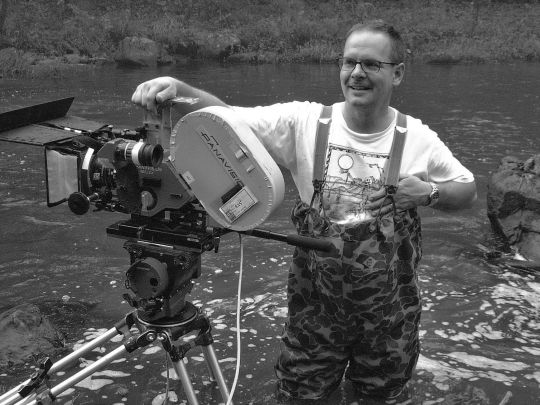
Working with some HUGE film format film, YUMMY 65! Panavision on The New World. Special thanks to Mark WarbalZZ for the surprise in my eMail today. 10, 19, 2004.
7 notes
·
View notes
Photo

Sunblessed - @kev.dias - - - #actor #cinematic #sunset #gfx100s #fujifilmgfx #fujifilm #mediumformatphotography @fujifilmx_us #california #freedom @dynamicportraits #xpan #kodakcolor #venicebeach #fujifilmnostalgicnegative #panavision @panavisionofficial #cinematography #fujirecipes (at Los Angeles, California) https://www.instagram.com/p/CofVZplJSk5/?igshid=NGJjMDIxMWI=
#actor#cinematic#sunset#gfx100s#fujifilmgfx#fujifilm#mediumformatphotography#california#freedom#xpan#kodakcolor#venicebeach#fujifilmnostalgicnegative#panavision#cinematography#fujirecipes
3 notes
·
View notes
Text
youtube
Top 50 Albums of 2022
16. A Light For Attracting Attention by The Smile
From the moment I saw The Smile’s electric debut during the Glastonbury livestream last summer, I was longing for a full length project from the trio consisting of Radiohead’s Thom Yorke and Jonny Greenwood, as well as Sons of Kemet drummer Tom Skinner. With great track after great track continuing to drop, anticipation for this debut album was locked at fever pitch for months before it finally got released in May. Thankfully when it did arrive, it was every bit as good as anticipated.
The six singles leading up to this record certainly hinted that there would be heavy shades to Thom and Johnny’s main project, and that is certainly the case. Although there are moments where Tom Skinner’s jazz influence and a touch of Greenwood’s film score work come into play, for the most part this very much sounds and feels like a Radiohead album – which is definitely not a bad thing at all.
With long-time Radiohead producer Nigel Godrich also at the helm, what The Smile may lack in any radical direction changes they more than make up for with an excellent collection of songs that would be worthy of the Radiohead name. After the understated, steady electronic build of opener The Same, the stuttering bluesy guitar riffs of The Opposite soon arrive to kick the record firmly into gear. Brilliant lead single You Will Never Work In Television Again then follows, built around raw, grungy guitars and the return of Yorke’s shout-sing vocals, offering a neat throwback to their early 90s/The Bends-era sound.
As mentioned above, there are a few moments on the album where the trio do add elements to the Radiohead template and it is in these moments for me that the record really shines. Pana-Vision for example (which got its debut in the series finale of Peaky Blinders, see above) is a hugely cinematic and grand composition, playing out like a less-sombre, spiritual sequel to Pyramid Song but with even more multi-layered orchestration included. The Smoke is then another slightly more ambitious cut, built around a jazzy bassline and big horns, along with Yorke’s signature falsetto vocals - it’s completely entrancing.
Speech Bubbles serves up one of the most goosebump-inducing moments on the whole album, with its gentle strings and Thom’s transcendent, soft vocals. Open The Floodgates is another hair-raiser, with its beautiful piano, mesmerising synths, twinkly guitars and Yorke’s utterly inimitable vocals. Free the Knowledge then really is something straight off The Bends - an acoustic-driven track with some hugely atmospheric and spellbinding orchestration.
After the jazz-infused A Hairdryer and ominous electronica of Waving A White Flag, the penultimate track We Don’t Know What Tomorrow Brings is probably my favourite of the whole record. Once again carrying all the hallmarks of a signature Radiohead track, this one would happily slot onto In Rainbows with its mix of pulsating synths, heavy rock guitars, thumping drums and a hypnotic central refrain. Before you’ve barely caught your breath from that incredible whirlwind of sound, the album is drawn to a close with Skrting on the Surface. Once again centred around Yorke’s ethereal vocals which glide sumptuously across soft drums and Greenwood’s gentle guitar melody, a gorgeous melancholic horn arrangement eventually joins the fray in the latter half for what is a sublime climax to the record.
Having been ever so slightly disappointed after the initial first play earlier this year (which is crazy looking back now), this is an album that has just continued to grow on me with each subsequent play. With plenty of the Radiohead hallmarks you already know and love, with just a hint of something new and refreshing too, this is a really fine and accomplished debut for The Smile. Although everyone will undoubtedly want a Radiohead album next, I would also happily take a follow-up to this one too.
Best tracks: We Don’t Know What Tomorrow Brings, Skrting On The Surface, Pana-Vision
Listen here
#new music#best new music#albums of the year#album recommendation#album of the year#best of 2022#best of the year#aoty#aoty 2022#best albums of 2022#albums of 2022#the smile#radiohead#thom yorke#jonny greenwood#peaky blinders#panavision#a light for attracting attention#Youtube
2 notes
·
View notes
Text
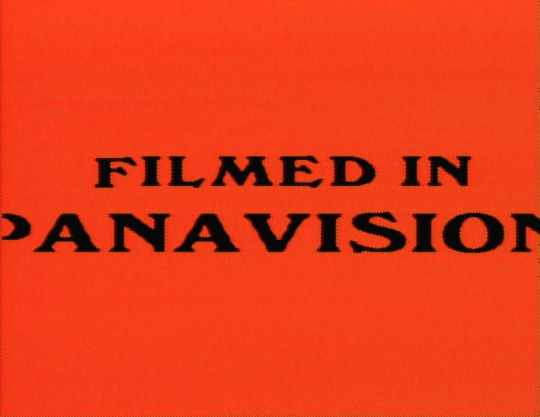
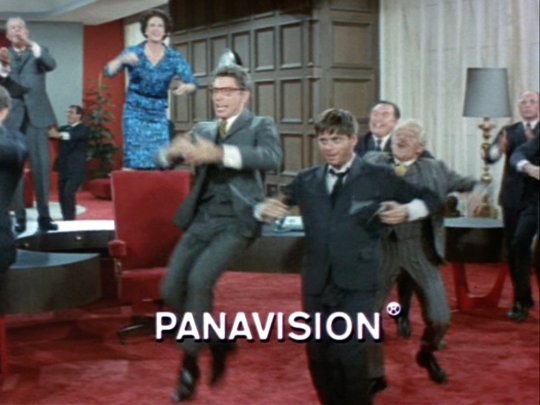
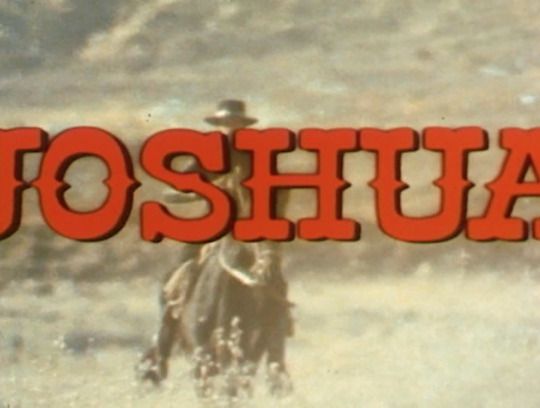

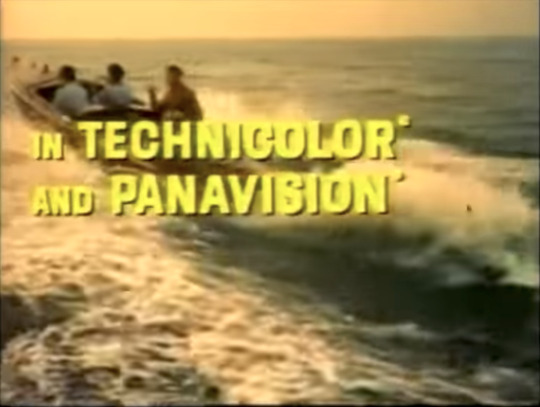
Lies my father told me.
4 notes
·
View notes
Photo

Posted @withrepost • @ae_dop Another little ADOW2 rushes frame, again from the incredible #GloucesterCathedral.. Although we had our main lighting rig of 18k's pushing through the incredible old stained-glass windows, this moment was accentuated by the power of the sun that carried the colour of the window glass onto the stonework. A level of punch we'd never have been able to compete with. One of those beautiful little moments of serendipity in filmmaking where everything lines up just so... Shot on @Arri #AlexaMini with #Panavision #PVintage primes. Serviced by @Panavisionofficial and @Panaluxworld https://www.instagram.com/p/Ci8l81DIkLY/?igshid=NGJjMDIxMWI=
3 notes
·
View notes
Text
The Smile’s Gear for The Smile’s NPR Tiny Desk Performance
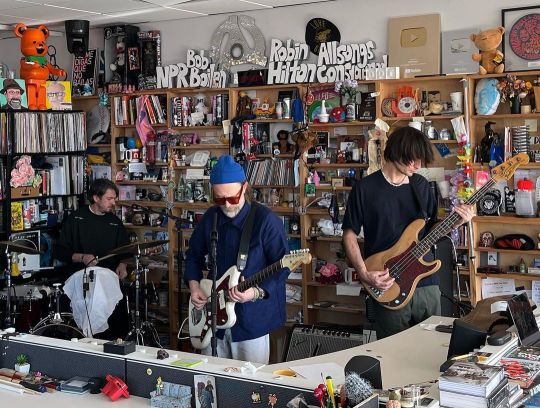
Photo by joshrogosin.
NPR has finally released the Tiny Desk performance that The Smile recorded back in late-November 2022. The band usually performs at low volumes, and they tend to rely on venue ambience rather than adding their own reverb, so it’s no surprise that they fit right in at Tiny Desk. However, it’s still a surprise hearing the band totally dry, particularly without Thom’s various vocal delay pedals. In an Instagram post, Bob Boilen said the band spend "roughly 90 minutes" rehearsing to decide on the songs to play. The band also recorded We Don’t Know What Tomorrow Brings, but according to Boilen "they weren't happy with their performance", so the song isn't included. The band clearly rehearsed a bunch of things, as much of the gear they brought along wasn't used in the final video.
There was too much detail to include in one post, so we’ve split it into two more. But for now, here’s a brief overview with the key details:
Thom played his Fender Mustang bass on The Smoke, and his vintage Guild Starfire II bass on Skirting On The Surface. Both are short-scale basses, which Thom tends to favor. Although we don’t get to hear the song, we can see that Thom played his 1964 Fender Jazzmaster guitar on We Don’t Know What Tomorrow Brings. Although we don’t get to hear the song, we can see that Thom played his 1964 Fender Jazzmaster guitar on You Will Never Work In Television Again, rather than the vintage Epiphone Casino he played on the song at recent live shows (including on The Tonight Show).
As at live shows in 2022, Jonny played his early-70s Fender Precision Bass in natural finish on Panavision and You Will Never Work In Television Again. For The Smoke and Skirting On The Surface, he played his vintage Gibson Les Paul in natural finish. Jonny only used his Boss RE-202 Space Echo as a reverb on The Smoke. But on Skirting, he used his RE-202 as a delay, his Akai Headrush E2 as a looper, and his Electro-Harmonix Freeze during the solo. All of that closely mirrors how Jonny played the songs at live shows throughout 2022.
Thom and Jonny shared a pair of small combo amps, using a Fender ‘68 Custom Reissue Deluxe Reverb for guitars and an Ampeg RB-110 combo for bass. Both amps belong to Tiny Desk and can be seen in recent performances. This is the first time Thom or Jonny have been seen with either of those amps, and the Ampeg should not be confused with the Ampeg PF-50T combos that Jonny used for The Smile’s Magazine performances in January 2022.
The upright piano played by Thom, the drum kit and cymbals played by Tom, and the wide range of AEA ribbon microphones all similarly belong to Tiny Desk, and can be seen in other videos on the Tiny Desk channel.
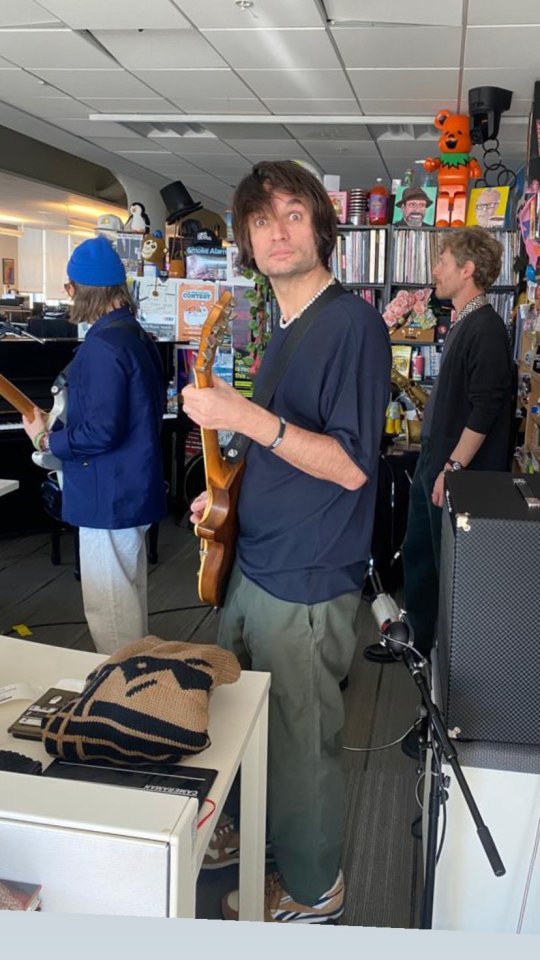
Photo by joshrogosin.
#The Smile#Panavision#The Smoke#You Will Never Work In Television Again#Skirting On The Surface#Tom Skinner#Thom Yorke#Jonny Greenwood#NPR#npr tiny desk#Tiny Desk#We Don't Know What Tomorrow Brings
26 notes
·
View notes
Text




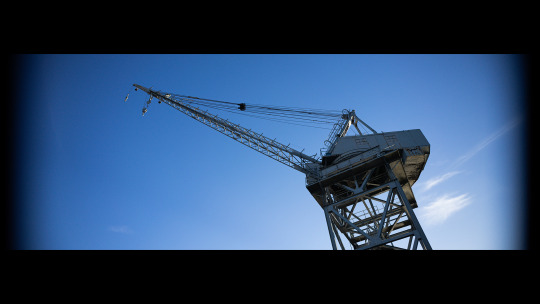
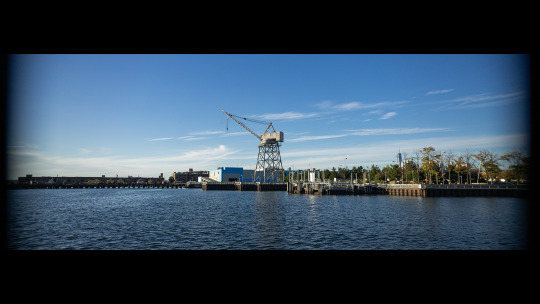

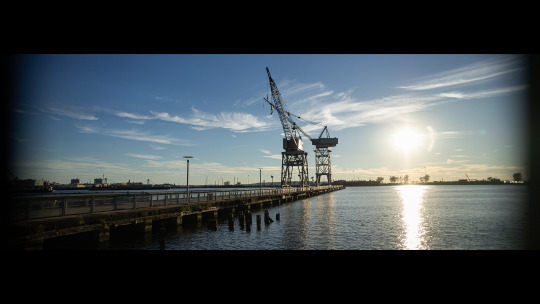


October 13, 2023 (2 of 3)
This was the last area of Red Hook I needed to check out. With this, I've now walked around the entire neighborhood.
#photography#street photography#widescreen#cinematic#cinematic photography#cityscape#landscape#industrial#golden hour#red hook#sunset park#brooklyn#new york#ny#panavision#ultra panavision 70
4 notes
·
View notes